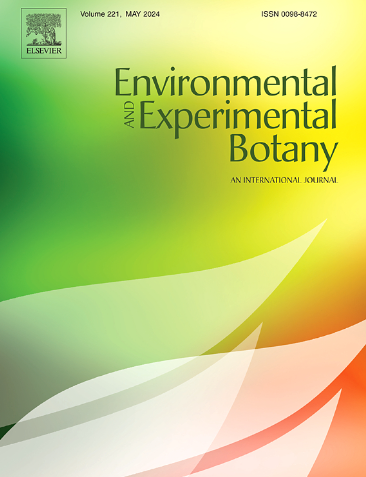硫酸盐剥夺和大气H2S暴露对C4植物玉米幼苗硫代谢的调控
IF 4.7
2区 生物学
Q2 ENVIRONMENTAL SCIENCES
引用次数: 0
摘要
增加种植高产C4作物可能有助于农业的第二次绿色革命。然而,在C4植物中,对矿质营养的调控却知之甚少。为了了解C4光合作用对根系对硫酸盐吸收和硫酸盐同化为半胱氨酸的调节的影响,在硫酸盐充足和硫酸盐缺乏的条件下,将单子叶C4植物玉米(Zea mays)幼苗暴露在1.0 μ l l−1大气H2S的无毒水平下。硫酸盐剥夺不仅影响了植株的生长和含硫、含氮化合物的含量,还增强了根系中硫酸盐转运体的表达和活性以及根、梢中APS还原酶(APR)的表达和活性。H2S暴露减轻了硫剥夺症状的建立,并且幼苗至少部分地从硫酸盐转向H2S作为硫源。此外,H2S暴露导致茎部和根中APR的表达和活性下调,但对根中硫酸盐转运体的表达和活性影响不大。这些结果表明,玉米幼苗对硫酸盐剥夺和大气H2S暴露的响应与C3单子叶相似,这意味着玉米C4光合作用与硫酸盐吸收和同化成半胱氨酸的全株调节并不相关。本文章由计算机程序翻译,如有差异,请以英文原文为准。
Regulation of sulfur metabolism in seedlings of the C4 plant maize upon sulfate deprivation and atmospheric H2S exposure
The increased cultivation of highly productive C4 crop plants may contribute to a second green revolution in agriculture. However, the regulation of mineral nutrition is rather poorly understood in C4 plants. To understand the impact of C4 photosynthesis on the regulation of sulfate uptake by the root and sulfate assimilation into cysteine at the whole plant level, seedlings of the monocot C4 plant maize (Zea mays) were exposed to a non-toxic level of 1.0 µl l−1 atmospheric H2S at sulfate-sufficient and sulfate-deprived conditions. Sulfate deprivation not only affected growth and the levels of sulfur- and nitrogen-containing compounds, but it also enhanced the expression and activity of the sulfate transporters in the root and the expression and activity of APS reductase (APR) in the root and shoot. H2S exposure alleviated the establishment of sulfur deprivation symptoms and seedlings switched, at least partly, from sulfate to H2S as sulfur source. Moreover, H2S exposure resulted in a downregulation of the expression and activity of APR in both shoot and root, though it hardly affected that of the sulfate transporters in the root. These results indicate that maize seedlings respond similarly to sulfate deprivation and atmospheric H2S exposure as C3 monocots, implying that C4 photosynthesis in maize is not associated with a distinct whole plant regulation of sulfate uptake and assimilation into cysteine.
求助全文
通过发布文献求助,成功后即可免费获取论文全文。
去求助
来源期刊

Environmental and Experimental Botany
环境科学-环境科学
CiteScore
9.30
自引率
5.30%
发文量
342
审稿时长
26 days
期刊介绍:
Environmental and Experimental Botany (EEB) publishes research papers on the physical, chemical, biological, molecular mechanisms and processes involved in the responses of plants to their environment.
In addition to research papers, the journal includes review articles. Submission is in agreement with the Editors-in-Chief.
The Journal also publishes special issues which are built by invited guest editors and are related to the main themes of EEB.
The areas covered by the Journal include:
(1) Responses of plants to heavy metals and pollutants
(2) Plant/water interactions (salinity, drought, flooding)
(3) Responses of plants to radiations ranging from UV-B to infrared
(4) Plant/atmosphere relations (ozone, CO2 , temperature)
(5) Global change impacts on plant ecophysiology
(6) Biotic interactions involving environmental factors.
 求助内容:
求助内容: 应助结果提醒方式:
应助结果提醒方式:


